 by "ttyymmnn" (ttyymmnn)
by "ttyymmnn" (ttyymmnn)
Published 12/12/2017 at 12:35
 by "ttyymmnn" (ttyymmnn)
by "ttyymmnn" (ttyymmnn)
Published 12/12/2017 at 12:35
Tags: planelopnik history
; Planelopnik
STARS: 8
!!! UNKNOWN CONTENT TYPE !!!
Welcome to
This Date in Aviation History
, getting of you caught up on milestones, important historical events and people in aviation from December 9 through December 12.
!!! UNKNOWN CONTENT TYPE !!!
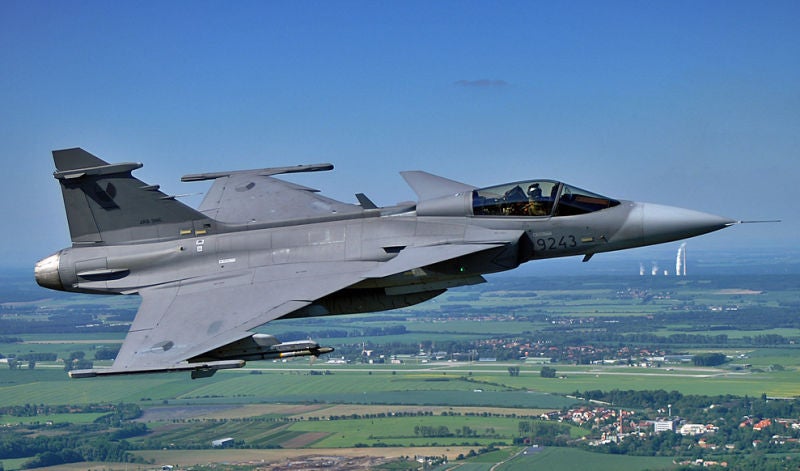
December 9, 1988 – The first flight of the JAS 39 Gripen. In the late 1970s, the Swedish Air Force ( Flygvapnet ) began a search for a new fighter to replace the Saab 35 Draken and 37 Viggen , both of which had been serving since the mid-1950s and mid-1960s respectively and were beginning to show their age. In 1979, the Swedish government issued a requirement for a Mach 2, multirole fighter, one that could perform air-to-air ( Jakt ), ground attack ( Attack ) and reconnaissance ( Spaning ) missions, hence the JAS prefix for the new fighter. After evaluating existing aircraft such as the General Dynamics F-16 Fighting Falcon and McDonnell Douglas F/A-18 Hornet , the Swedish Parliament decided to forge ahead with a domestically designed aircraft, a project which ultimately cost $15 billion dollars (US).
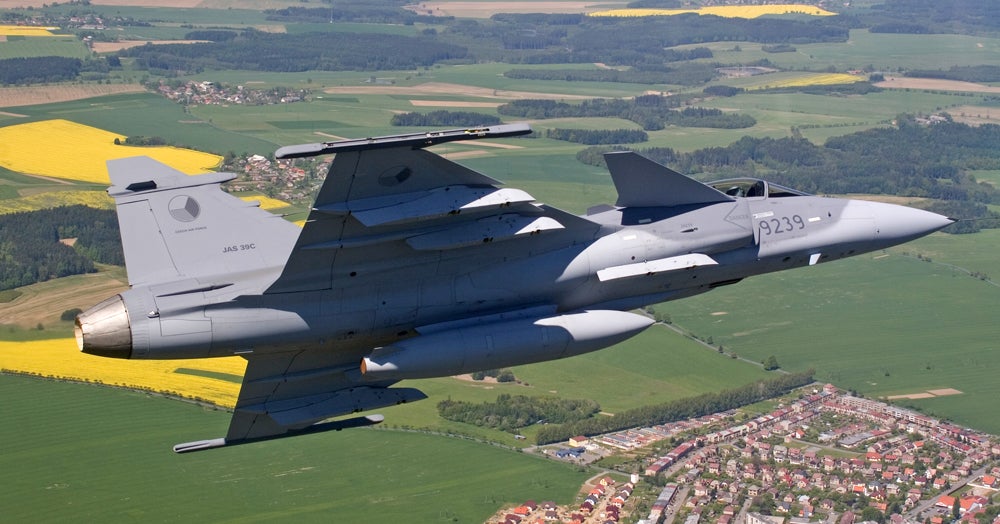
Several Saab designs were considered, but the Flygvapnet ultimately settled on a single engine aircraft with a delta wing, forward canards, and fly-by-wire controls. Like other modern jet fighters, the Gripen was designed with inherent instability, known as relaxed stability, which requires computer input to the flight surfaces to help the pilot maintain control of the aircraft. While it may seem counterintuitive to design an unstable aircraft, the result is an aircraft that is extremely maneuverable. Smaller control inputs are required to steer the aircraft, and there is the added benefit of a reduction in drag and an increase in control response. The Gripen also had to work within Sweden’s dispersed basing plan, which spreads fighters to smaller facilities around the country and, in some cases, uses existing roadways for runways. Thus, the Gripen was designed for easy maintenance in the field, and its forward canards, while helping to control the fighter in flight, also provide added lift to aid in short takeoff operations. The Gripen is powered by a single Volvo-Flygmotor RM12 low-bypass afterburning turbofan, a license-built derivative of the General Electric F404-400 . The engine gives the Gripen a top speed of Mach 2, and also allows the fighter to maintain supersonic speeds without the use of an afterburner ( supercruise ).

The Swedish Air Force placed an initial order for 204 Gripens to be delivered in three batches, and took delivery of the first fighter in 1993, with the first of the new fighters entering service in 1996. The JAS 39A was the initial single seat version and was armed with a single 27 mm
Mauser BK-27
revolver cannon
and fitted with eight external hard points for rockets, missiles or bombs. The JAS 39B is a two-seat variant for training and type conversion, but making accommodations for the second pilot required the removal of the gun. The JAS 39C is the NATO compatible version, and can be refueled in flight by NATO tankers. The Gripen NG is a further improved and modernized version, and Saab is also considering a navalized variant. The Gripen remains in production, and about 250 have been built. The Gripen is exported to seven other countries, with others showing interest in obtaining the fighter.
(Photo by Milan Nykodym via
Wikimedia Commons
; Czech Ministry of Defense photo; photo by Tim Felce via
Wikimedia Commons
)
!!! UNKNOWN CONTENT TYPE !!!

December 11, 2009 – The first flight of the Airbus A400M Atlas. Ever since its first flight in 1954, the Lockheed C-130 Hercules has been the king of tactical airlift, a remarkable workhorse of an aircraft that has been continuously produced for over 60 years. But that record of success didn’t stop aircraft designers from trying to find a replacement for the venerable Herk.
Development of the A400M began in 1982 when a consortium of aircraft manufacturers including Aérospatiale, British Aerospace, Lockheed and Messerschmitt-Bölkow-Blohm, formed a group to develop what was called the Future International Airlifter to replace the older Hercules, as well as the smaller, twin-engine the Transall C-160 . The new tactical airlifted was planned to fit somewhere in between the C-130 and the much larger Boeing C-17 Globemaster III strategic airlifter, with the idea being to create an aircraft that could carry a heavier load than the C-130 while still operating from airstrips that cannot be used by the C-17. International politics being what they are, and with competing interests in the requirements of the new aircraft, Lockheed eventually left the group to develop the upgraded C-130J Super Hercules , other European nations came and went, and the remaining countries were organized under the banner of Airbus Military .
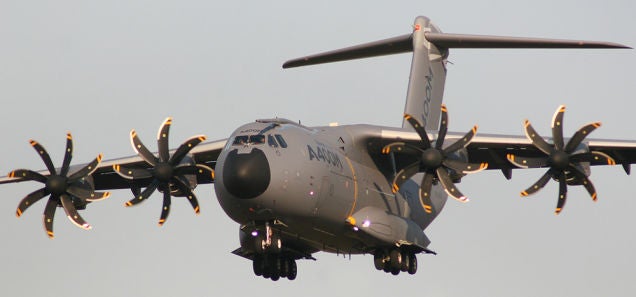
One of the first problems Airbus Military faced was the lack of an existing turboprop engine that could provide the required performance. After making a request for proposals, Pratt & Whitney Canada replied with their PW180 and Europrop International offered their TP400 . As a result of perhaps more European political intrigue, the Europrop engine was selected. The TP400 produces 11,000 hp and the quartet of engines on the A400M provides a maximum speed of 513 mph and a cruising speed of 485 mph. To compensate for control problems caused by engine torque, the A400M features counter-rotating propellers , but the opposite rotation direction is not derived by making engine that turn in different directions. Rather, all the engines turn in the same direction, and a gearbox is used to reverse the rotation direction of the propeller for one engine on each wing. The inner engines rotate outwards, while the outer engines rotate inwards. Having the engines all turn the same direction allows for commonality among all four engines which simplifies maintenance and reduces cost. Airbus Military states that the Atlas has a range of over 5,000 miles at an altitude of 37,000 feet with a maximum payload of 81,000 pounds, or nearly twice that of the C-130J. It also features autonomous cargo loading and unloading which permits cargo transfer to be carried out by a single loadmaster.

As with any new, complex aircraft, delays pushed delivery dates farther and farther back, with initial deployment deferred from 2009 to 2012. The French Air Force completed the first operational mission of the A400M in December of 2013 in support of Operation Serval in Mali, and the British made their first operational flight in 2015. The A400M suffered its first fatal accident in May 2015 when engine mapping software was inadvertently erased and the engines failed to provide power during takeoff. Four employees of Spanish Airbus were killed, and two were seriously injured. A total of 174 aircraft have been ordered so far, with 54 deliveries completed as of December 1, 2017. (Photo by Tim Felce via Wikimedia Commons; Photo by Curimedia via Wikimedia Commons ; photo by Julian Herzog via Wikimedia Commons )
!!! UNKNOWN CONTENT TYPE !!!
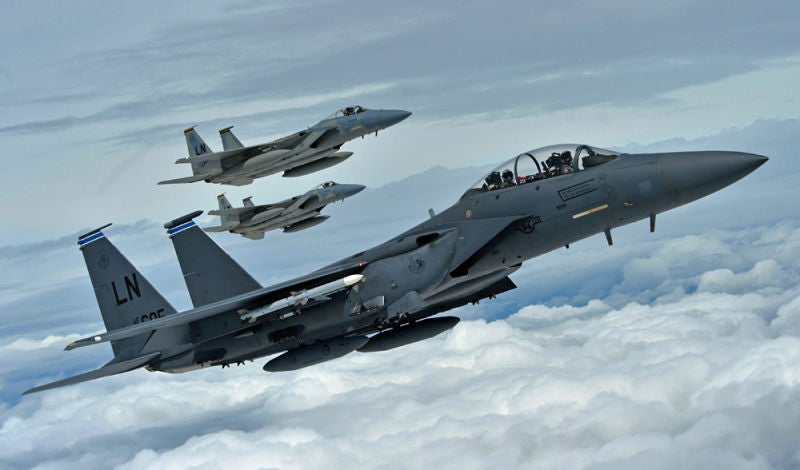
December 11, 1986 – The first flight of the McDonnell Douglas F-15E Strike Eagle. In the late 1960s, the US Air Force began looking for a new fighter to replace the McDonnell Douglas F-4 Phantom II , a search which ended with the McDonnell Douglas F-15 Eagle . The Eagle was designed from the outset as an air superiority fighter, meaning that it could take command of the airspace over the battlefield and maintain control of it. But the Air Force made sure that the Eagle was strictly an air-to-air platform, and the F-15 Special Projects Office vehemently opposed the idea of the Eagle directly supporting troops on the ground, or taking part in air-to-ground missions, saying, “Not a pound for air to ground.” After all, the Fairchild Republic A-10 Thunderbolt II , arguably one of the greatest ground attack aircraft ever produced, was getting ready to join the Air Force, and took its maiden flight in 1972 along with the Eagle. But in spite of no official support for a ground attack version of the Eagle, McDonnell Douglas worked quietly on an advanced, multi-role version of the Eagle in the hopes that opinions in the Air Force might one day change.
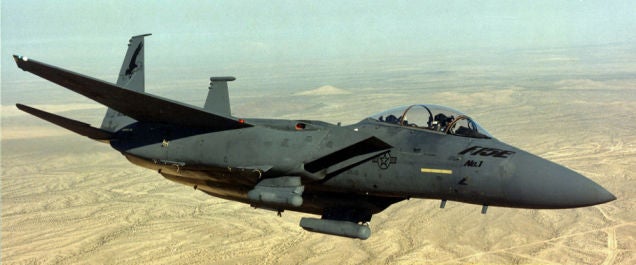
In 1981, the Air Force announced the Enhanced Tactical Fighter program to find a replacement for the General Dynamics F-111 Aardvark . The goal was to develop a fighter that could strike deep into enemy territory without requiring fighter escort or electronic jamming provided by additional aircraft, and would also have the ability to defend itself from aerial attack. General Dynamics responded with the F-16XL , a cranked delta wing version of their successful F-16 Fighting Falcon , and McDonnell Douglas submitted the F-15E they had been working on. After a two-year evaluation, the Air Force selected the F-15E, which proved to be capable of takeoff weights in excess of 75,000 pounds and had the ability to operate with 16 different weapon configurations. Other factors in the Air Force’s decision were the reduced development costs from its commonality to the F-15 fighter, future growth potential, and the added safety of two engines.
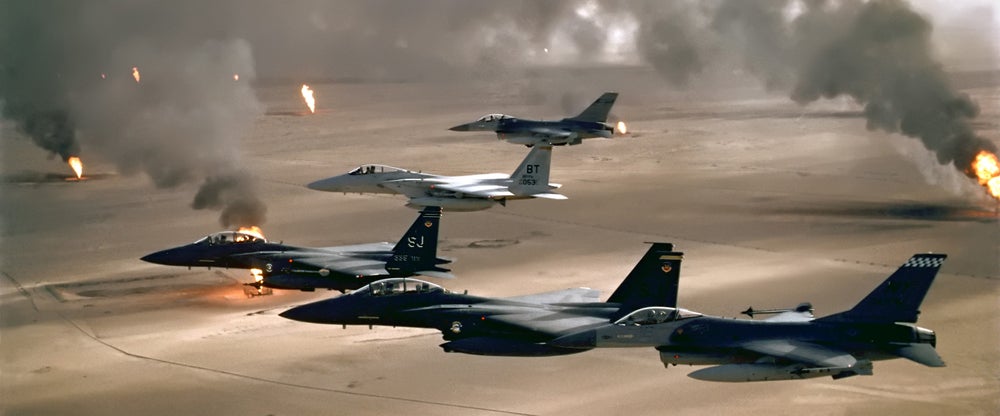
The F-15E is very similar in appearance to the original F-15, but the most apparent difference is the addition of a second seat for the Weapons Systems Officer (WSO) and a darker camouflage pattern. The fuselage was redesigned and strengthened to accept more powerful Pratt& Whitney F100 afterburning turbofan engines, and conformal fuel tanks were later added to the sides of the fuselage to extend range. And, unlike other two-seat aircraft with a WSO, such as the Grumman F-14 Tomcat , the rear seat has controls to fly the plane if necessary. The Strike Eagle was introduced in 1988, and soon saw action in the skies over Iraq and Kuwait in Operations Desert Storm and Desert Shield , and has gone on to fight in all major operations since. The F-15E remains in production, with over 420 built, and in addition to its service with the US Air Force, the Strike Eagle also flies for the air forces of Israel, South Korea, Saudi Arabia and Singapore. (US Air Force photos) .
!!! UNKNOWN CONTENT TYPE !!!
!!! UNKNOWN CONTENT TYPE !!!
!!! UNKNOWN CONTENT TYPE !!!
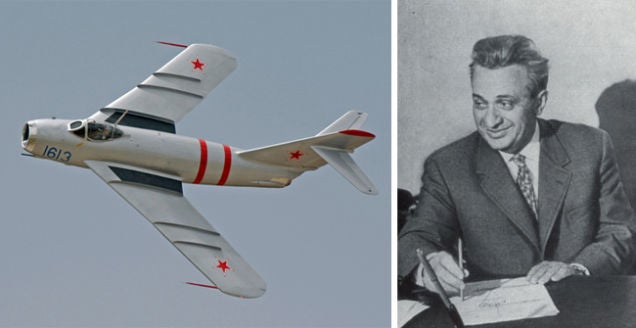
December 9, 1970 – The death of Artem Mikoyan, a Russian aviation designer of Armenian descent who partnered with Mikhail Gurevich to design many of the most important Soviet military aircraft of the Cold War and beyond. Mikoyan designed his first airplane while attending the Zhukovsky Air Force Engineering Academy , from which he graduated in 1936. By 1939, he had teamed with Gurevich to form the Mikoyan-Gurevich design bureau (MiG) and, while their wartime designs were mostly unsuccessful, their post-war jet aircraft made them famous, beginning with the swept-wing MiG-15 and including many more advanced designs to counter Western militaries. Mikoyan twice received the Soviet Union’s highest award, the Hero of Socialist Labor . (MiG-17F photo by the author; Mikoyan photo author unknown via Wikimedia Commons )
!!! UNKNOWN CONTENT TYPE !!!
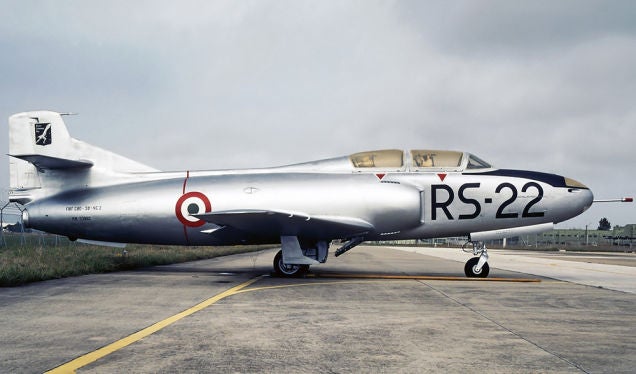
December 9, 1951 – The first flight of the Fiat G.80,
a tandem jet trainer and the first true jet aircraft designed in Italy. First built two prototypes powered by a single
de Havilland Goblin
turbojet, followed by three production aircraft. However, the Italian Air Force found the G.80 to be unsuitable for operations and did not accept them. In hopes of securing a NATO contract, Fiat followed the G.80 with the G.82, which had an enlarged fuselage, a more powerful
Rolls-Royce Nene 2/21
turbojet, and wingtip fuel tanks. However, the competition was cancelled, and the G.82 was cancelled as well after just six aircraft had been built.
(Photo by Aldo Bidini via
Wikimedia Commons
)
!!! UNKNOWN CONTENT TYPE !!!
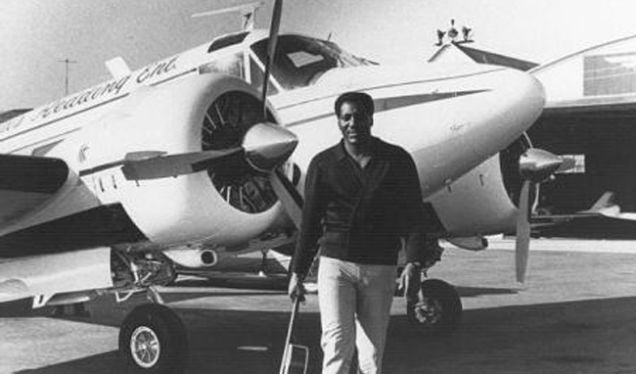
December 10, 1967 – Singer Otis Redding is killed in an air crash. Redding and his band, the Bar-Kays, were traveling from Cleveland, Ohio to Madison, Wisconsin in Redding’s Beechcraft Model 18 . While flying in heavy rain and fog, the aircraft crashed into a lake three miles short of the runway at Truax Field in Madision, killing the pilot and six of the seven passengers. The only survivor was band member Ben Cauley. The official NTSB accident report lists the cause of the crash as “undetermined.” (Photo author unknown)
!!! UNKNOWN CONTENT TYPE !!!
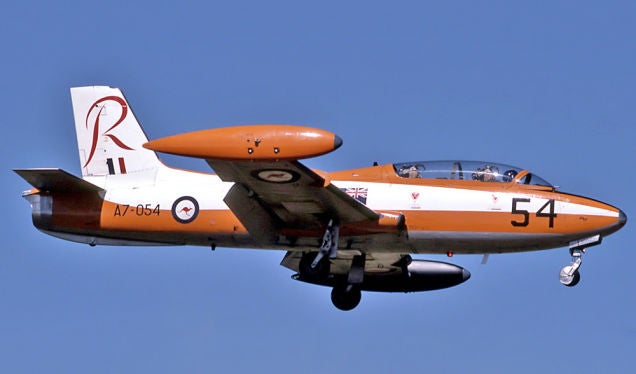
December 10, 1957 – The first flight of the Aermacchi MB-326. Without the means to produce supersonic aircraft following WWII, Italian designers focused on subsonic training and attack aircraft. The simple design of the MB-326 was both rugged and agile, and proved to be an ideal platform for all phases of jet pilot training. Initial production aircraft were powered by a single Bristol Siddeley Viper turbojet, the MB-326 proved to be an extremely successful design, and, with 800 aircraft produced, the MB-326 alone accounts for 10 percent of all aircraft ever built by Aermacchi. Developed as both a trainer and attack jet, the MB-326 served 16 countries, with the final aircraft being retired by Brazil in 2010. (Photo by Daniel Tanner via Wikimedia Commons )
!!! UNKNOWN CONTENT TYPE !!!
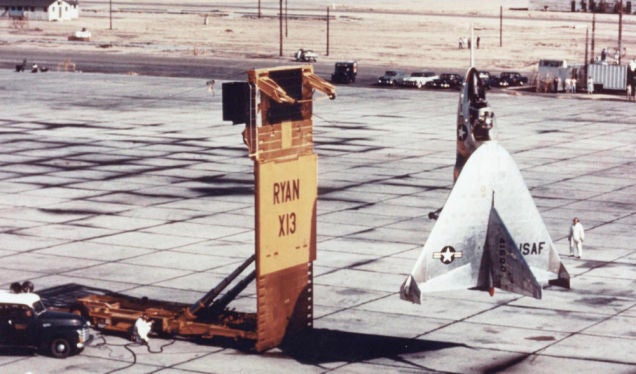
December 10, 1955 – The first flight of the Ryan X-13 Vertijet. In order to investigate the feasibility of launching an aircraft vertically from a submarine, designers at Ryan Aeronautical developed the X-13 to test the concept. The aircraft would be required to take off vertically, transition to level flight, then return to hover and land using only the rear engine. Two were built, and the first aircraft was fitted with a tricycle landing gear to test general flight characteristics. Subsequent tests proved that the aircraft could take off and land vertically, and the first takeoff, transition to horizontal flight, and return to vertical landing took place in 1957. While flight tests proved that such an arrangement was possible, the project was canceled for lack of an operational requirement. (US Air Force photo)
!!! UNKNOWN CONTENT TYPE !!!
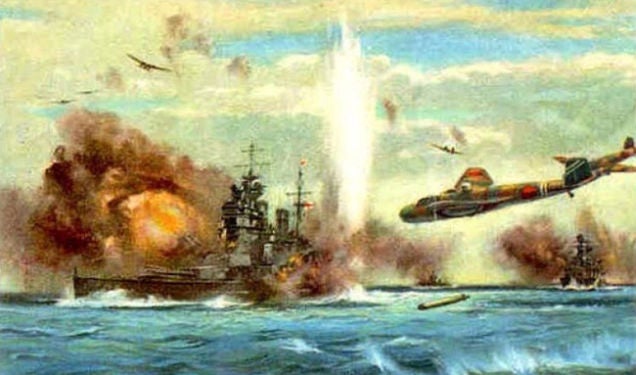
December 10, 1941 – Japanese aircraft sink the Royal Navy battleship HMS Prince of Wales and battlecruiser HMS Repulse. Prince of Wales and Repulse were part of Force Z , a naval squadron sent to intercept Japanese shipping in the waters off Singapore early in WWII. Royal Navy Admiral Sir Tom Phillips , in command of the squadron, decided to sail without air cover, and the ships were attacked by land-based Japanese Navy Mitsubishi G3M and Mitsubishi G4M aircraft carrying a mix of bombs and torpedoes. Both Prince of Wales and Repulse were hit by four torpedoes, and both sank with heavy loss of life. The attack marked the first time in history that air power had sunk capital ships that were actively fighting to defend themselves, and heralded the end of the battleship as the primary weapon of naval surface warfare. (Illustration artist unknown)
!!! UNKNOWN CONTENT TYPE !!!
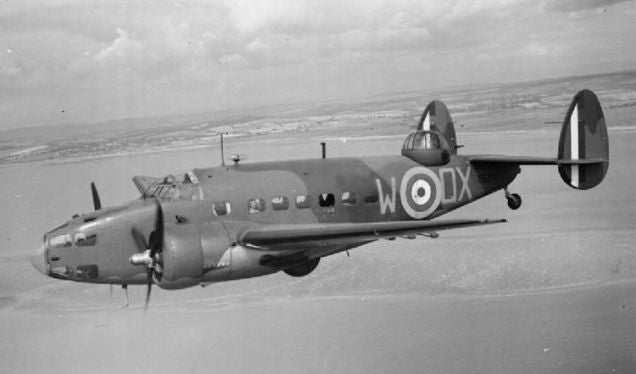
December 10, 1938 – The first flight of the Lockheed Hudson. A development of the Lockheed Model 14 Super Electra , the Hudson was built primarily for the Royal Air Force for use as a coastal reconnaissance aircraft, light bomber and in the anti-submarine warfare role. With the RAF’s initial order of 200 aircraft, the Hudson was the first major production aircraft for the Lockheed Aircraft Corporation , and they eventually produced nearly 3,000 Hudsons for the RAF, the Royal Canadian Air Force, the Royal Australian Air Force and the US Army Air Forces. Hudsons served throughout the war in both Europe and the Pacific, and also proved to be very agile fighters in the hands of a skilled pilot. (British government photo)
!!! UNKNOWN CONTENT TYPE !!!
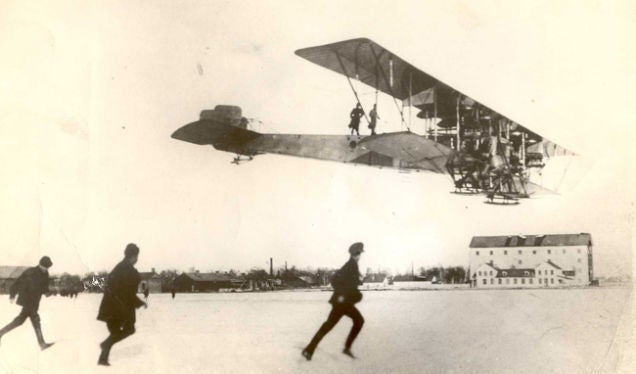
December 11, 1913 – The first flight of the Sikorsky Ilya Muromets , a large, four-engine bomber designed by Igor Sikorsky and developed from the earlier Sikorsky Russky Vityaz . Named after the hero from Russian mythology and originally intended as a large passenger aircraft, the Ilya Muromets was developed into a bomber as WWI approached, and, by 1918, 83 bombers had been produced. They were the first aircraft in aviation history to perform heavy bombing missions, group raids, night bombings and photo reconnaissance. In 400 sorties, the Ilya Muromets dropped sixty-five tons of bombs. Following the war, the Muromets returned to its original role of passenger aircraft and mail plane, with the final flight taking place in 1922. (Photo author unknown)
!!! UNKNOWN CONTENT TYPE !!!
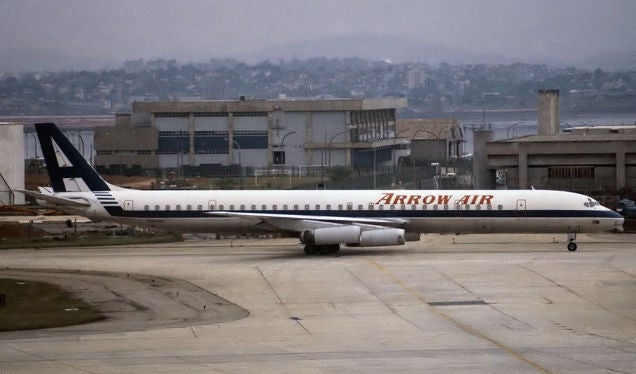
December 12, 1985 – The crash of Arrow Air Flight 1285, a chartered Douglas DC-8 (N950JW) that was carrying eight crew members and 248 soldiers of the US Army 101st Airborne Division returning to Fort Campbell, Kentucky after serving in a peacekeeping mission in the Sinai Peninsula. On the final leg of the flight, the DC-8 crashed shortly after takeoff from Gander, Newfoundland, killing all on board. The investigation concluded that the crash was caused by the accumulation of ice on the wings, as well as incorrect weight calculations. However, some investigators dissented, saying that a fire or explosive device likely caused the crash. The accident remains the deadliest single peacetime loss of life in the history of the US Army and the worst crash on Canadian soil. (Photo by Pedro Aragão via Wikimedia Commons )
!!! UNKNOWN CONTENT TYPE !!!
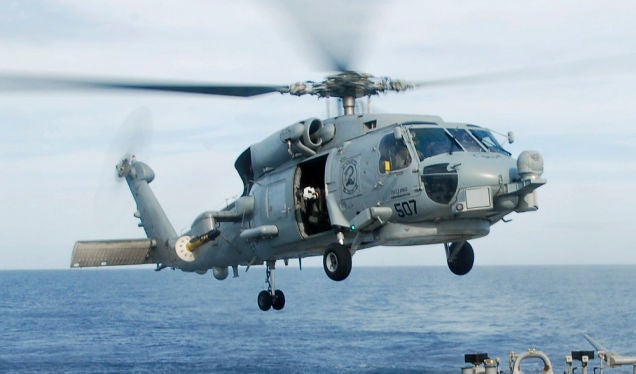
December 12, 1979 – The first flight of the Sikorsky SH-60B Seahawk (or Sea Hawk), a navalized variant of the Sikorsky UH-60 Black Hawk utility helicopter originally developed for the US Army. Developed to replace the Kaman SH-2 Seasprite , the SH-60 shares 83% commonality with its Army predecessor, with the most significant structural difference being a hinged tail for on-deck storage. The Seahawk also differs by the addition of oleo main gear struts, the shifting forward of the tail wheel, and a more powerful engine. Capable of serving from any air-capable ship, the Seahawk is designed for anti-submarine warfare, anti-surface warfare, naval special warfare, search and rescue, vertical replenishment and medical evacuation. Further variants have replaced the Sikorsky SH-3 Sea King and Boeing CH-46 Sea Knight . (US Navy photo)
!!! UNKNOWN CONTENT TYPE !!!
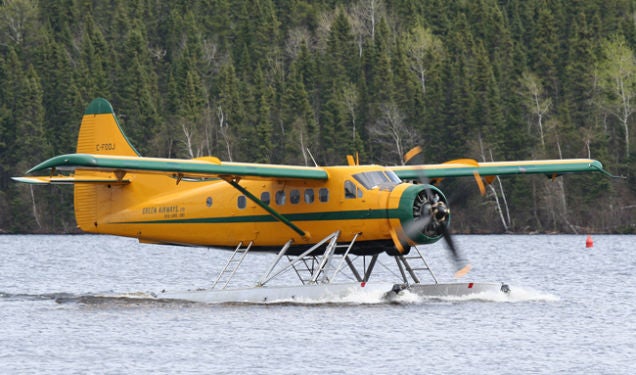
December 12, 1951 – The first flight of the de Havilland Canada DHC-3 Otter. With the DHC-2 Beaver, de Havilland Canada had built a reputation for rugged aircraft that were capable of taking off from short or unimproved airstrips, and the DHC-3 Otter was designed to be a larger and more powerful aircraft that could perform the same mission. Originally called the King Beaver, the DHC-3 is longer and heavier than the DHC-2, and can seat 10-11 passengers. Originally fitted with a Pratt & Whitney R-1340 geared radial engine, some Otters have been upgraded with a turboprop engine and are known as the Turbo Otter. The Otter is capable of operating from land, from sea with floats, or from snow with skis, and 466 Otters were produced from 1951-1967. (Photo by CanadianBushPilot via Wikimedia Commons )
!!! UNKNOWN CONTENT TYPE !!!
!!! UNKNOWN CONTENT TYPE !!!
!!! UNKNOWN CONTENT TYPE !!!
!!! UNKNOWN CONTENT TYPE !!!
!!! UNKNOWN CONTENT TYPE !!!
!!! UNKNOWN CONTENT TYPE !!!
!!! UNKNOWN CONTENT TYPE !!!
!!! UNKNOWN CONTENT TYPE !!!
If you enjoy these Aviation History posts, please let me know in the comments. And if you missed any of the past articles, you can find them all at
Planelopnik History
. You can also find more stories about aviation, aviators and airplane oddities at
Wingspan
.
!!! UNKNOWN CONTENT TYPE !!!
 "For Sweden" (rallybeetle)
"For Sweden" (rallybeetle)
12/12/2017 at 12:48, STARS: 2
FACT: Since the introduction of the Gripen, Russia has been too scared to invade Sweden.
 "Distraxi's idea of perfection is a Jagroen" (distraxi)
"Distraxi's idea of perfection is a Jagroen" (distraxi)
12/12/2017 at 12:49, STARS: 0
“a gearbox is used to reverse the direction of the propellers on one side of the aircraft”
From the photos it looks like they alternate across the aircraft: L R L R.
I wonder if there’s a dummy gearbox in the non-reversed ones to keep the packaging common.
 "ttyymmnn" (ttyymmnn)
"ttyymmnn" (ttyymmnn)
12/12/2017 at 12:55, STARS: 0
By golly, you’re right. I’ll have to edit that. Thanks for catching that.
As for a dummy box to balance things out, I don’t know.
 "Nothing" (nothingatalluseful)
"Nothing" (nothingatalluseful)
12/12/2017 at 12:55, STARS: 1
Seeing those F-15s reminds me of my USAF time while at Langley AFB. I have a tiny little B-17 diecast on my desk that I purchased when I did my flight last year, my dad was in the top turret during the war. I need a little F-15.
If there’s one thing I miss about Langley, it’s the flight line. Lots of cool shows and cool aircraft came through there. A bunch of us would go out at the end of the Mile Long building which was situated at the end of the air strip and everything coming back from SWA would come in low right over your head.
 "facw" (facw)
"facw" (facw)
12/12/2017 at 12:56, STARS: 1
Little did we know that this was actually a real attack but the Russians were scared off by the Gripens: https://theaviationist.com/2013/04/22/backfire-sweden/
 "Chariotoflove" (chariotoflove)
"Chariotoflove" (chariotoflove)
12/12/2017 at 13:04, STARS: 1
It’s amazing to me that the F-15E is still in production while the Raptor that came after it is not.
 "You can tell a Finn but you can't tell him much" (youcantellafinn)
"You can tell a Finn but you can't tell him much" (youcantellafinn)
12/12/2017 at 13:07, STARS: 2
Having more customers (export customers) makes it easier to keep a line running.
 "You can tell a Finn but you can't tell him much" (youcantellafinn)
"You can tell a Finn but you can't tell him much" (youcantellafinn)
12/12/2017 at 13:08, STARS: 0
On mobile so quoting is a PITA, but there is a line in there about the “quarter of engines” that should be “quartet of engines”. Autocorrect almost got me on that one, it corrects quartet to quarter.
 "ttyymmnn" (ttyymmnn)
"ttyymmnn" (ttyymmnn)
12/12/2017 at 13:10, STARS: 0
I lived in Norfolk from about 1976-1990. I still consider it home. As a young airplane nut, there was no better place to be, with all the military assets in the area. I never made it to Langley for a show, but I remember seeing the F-15s and others as we drove up the Peninsula. And trips to VA Beach were always highlighted by many F-14s overhead, and sonic boom rolling in from the ocean. I remember when the F-18s started showing up. I miss living there, but what I miss the most is the water. I’ve been landlocked in TX for almost 30 years now.
 "ttyymmnn" (ttyymmnn)
"ttyymmnn" (ttyymmnn)
12/12/2017 at 13:11, STARS: 0
Fookin’ autocorrect. Thanks. I’ll fix it.

12/12/2017 at 13:14, STARS: 0
Oh, the absolutely insane loadouts of the F-15E:
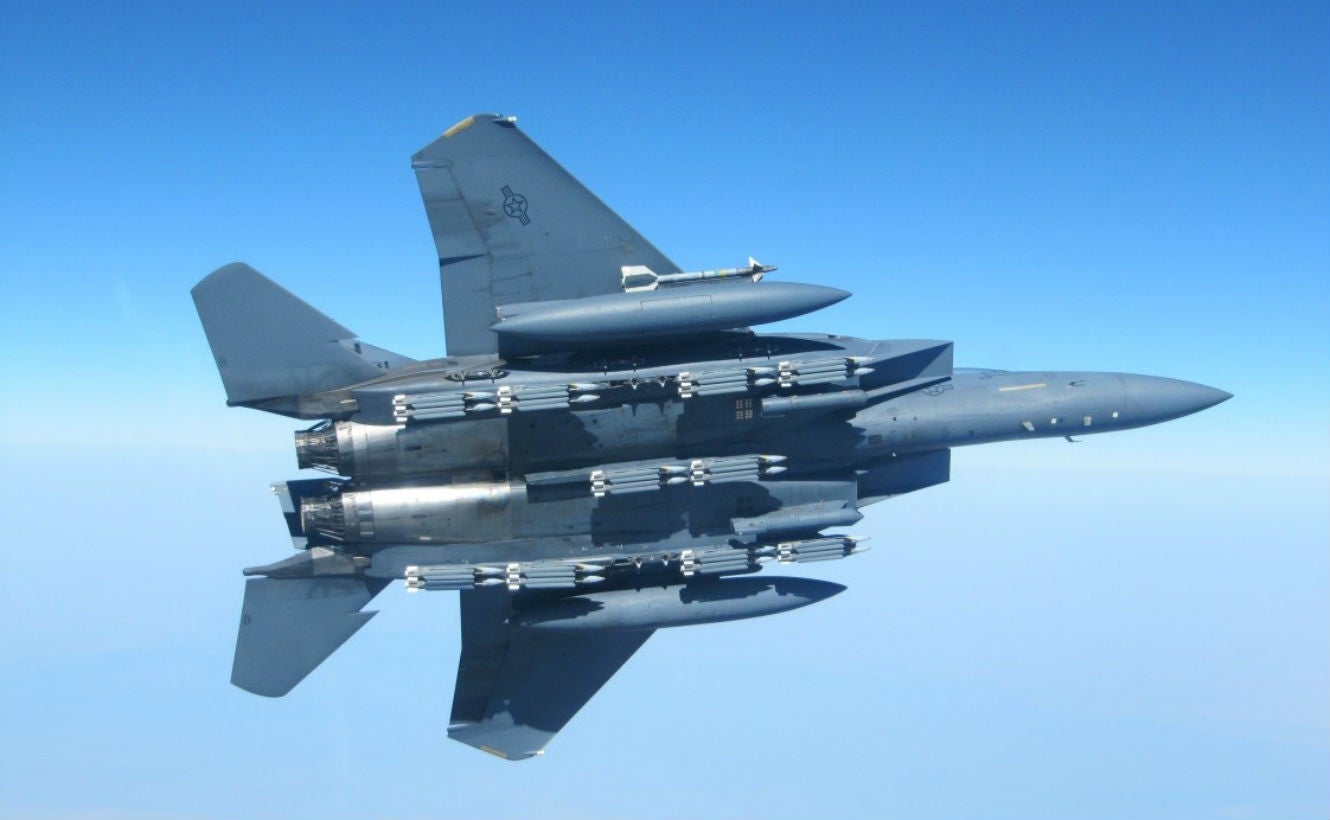
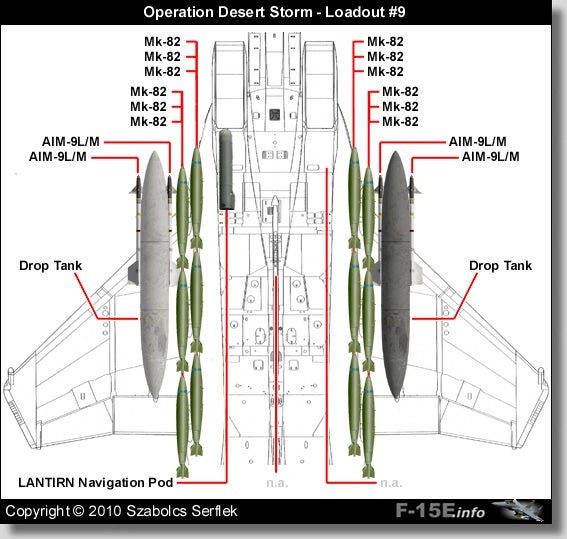
An F-15E can (potentially) carry more fuel and weapons than a B-29.
 "Chariotoflove" (chariotoflove)
"Chariotoflove" (chariotoflove)
12/12/2017 at 13:31, STARS: 0
Yeah, I assumed that. It still amazes me.
 "ttyymmnn" (ttyymmnn)
"ttyymmnn" (ttyymmnn)
12/12/2017 at 13:36, STARS: 0
All the bombs. I wonder if the CFTs freed up two hard points for yet more ordnance.
 "Nothing" (nothingatalluseful)
"Nothing" (nothingatalluseful)
12/12/2017 at 13:58, STARS: 0
Me too, I’ve been in CO now for 20 years after either living on the coast or on a river/lake in NY.
My favorite part of the shows at Langley was that they had to do a pass in review for the command prior to show season, so those were fun to watch, too.